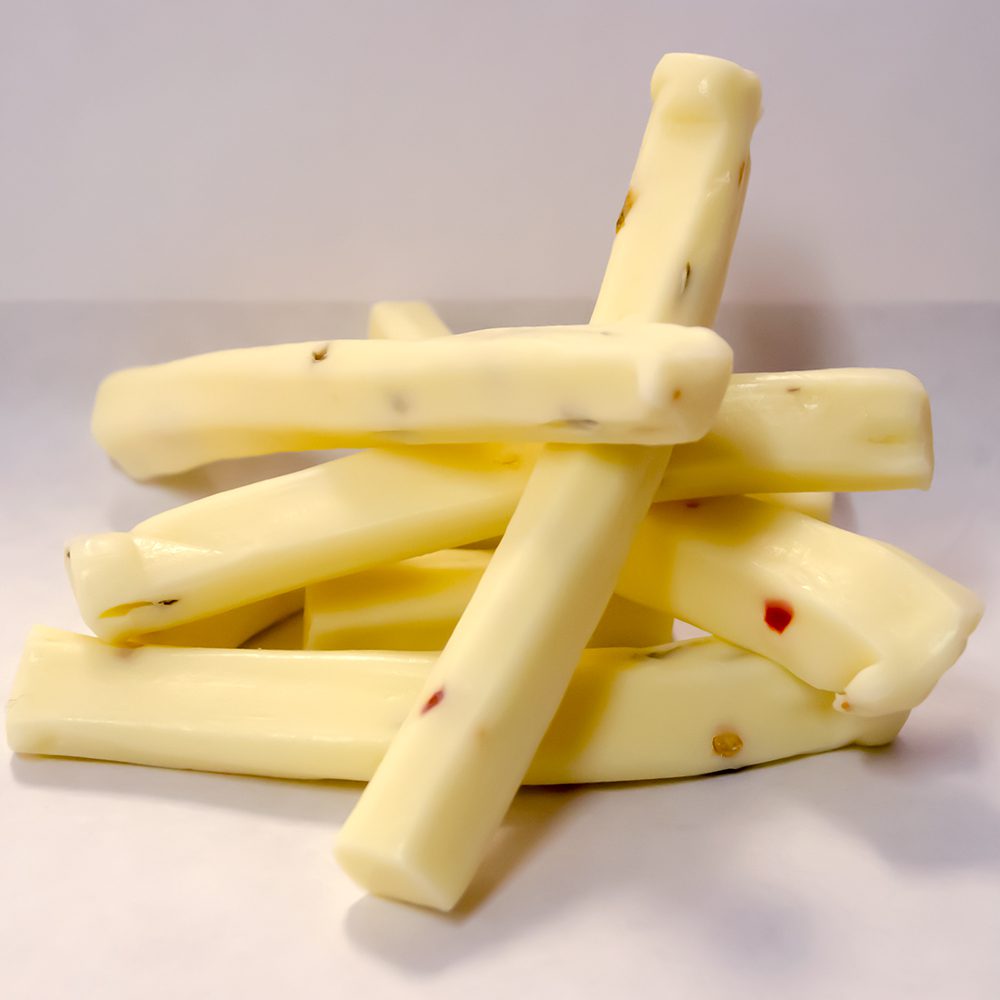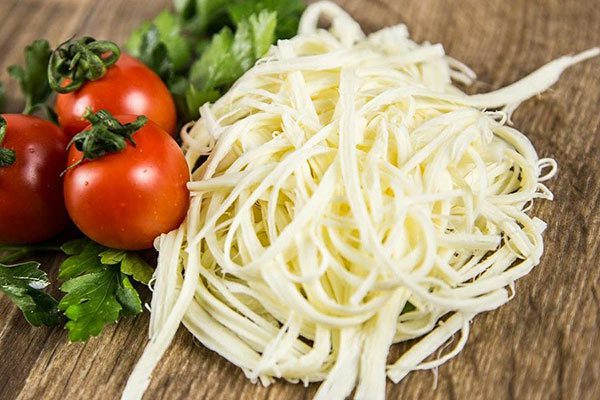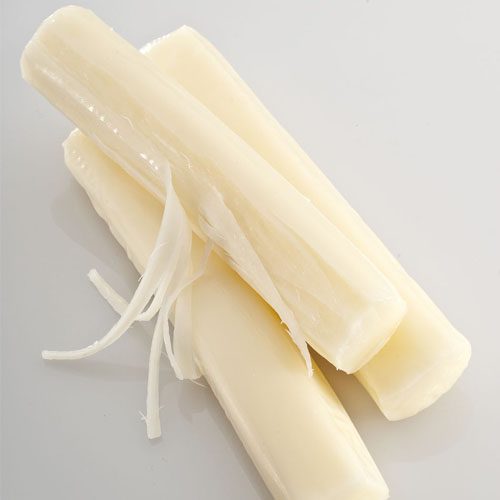String cheese, a delightful and versatile dairy product, has become a staple in the culinary world, capturing the taste buds of people around the globe. Whether enjoyed on its own as a snack or incorporated into various dishes, string cheese has earned a special place in the hearts of food enthusiasts. In this article, we will delve into the origins, production methods, nutritional benefits, and creative uses of string cheese.
Origins and History of String Cheese
The roots of string cheese can be traced back to various cultures where stringy, stretchy cheeses were a culinary tradition. However, the term “string cheese” is often associated with the Middle East, where a cheese known as “Mshallaleh” has been enjoyed for centuries. This cheese is made by stretching and kneading the curd until it attains a string-like consistency.
In the United States, string cheese gained popularity in the 1970s and 1980s as a convenient and fun-to-eat snack. It was often packaged in individual portions, making it a favorite among schoolchildren and adults alike.

What is string cheese?
String cheese is a type of cheese that has a unique fibrous texture, allowing it to be pulled or peeled into thin strips or strings. It is often enjoyed as a snack but is also used in various culinary applications.
Is string cheese healthy?
Yes, string cheese is healthy due to its nutritional content, including protein and calcium. It provides a convenient and satisfying snack that can be part of a balanced diet.
Read Also: Is Sting Energy Drink Healthy

Production Process: String Cheese
The production of string cheese involves a series of steps that transform milk into the stretchy, fibrous delight that we know and love. The basic steps include milk pasteurization, curdling, cutting, stretching, and shaping.
Milk Pasteurization: The process begins with pasteurizing milk to eliminate harmful bacteria and ensure the safety of the final product.
Curdling: Rennet or another coagulating agent is added to the milk to form curds. The curds are then cut into small pieces.
Heating and Stretching: The curds are heated, and the stretching process begins. This is a crucial step that gives string cheese its unique texture. The curds are stretched and kneaded until they develop a fibrous, stringy consistency.
Shaping: Once the desired texture is achieved, the string cheese is shaped into long, cylindrical forms. It is then cooled and packaged for distribution.

Nutritional Benefits: String Cheese
String cheese offers more than just its delicious taste; it also provides several nutritional benefits. It is an excellent source of protein, calcium, and phosphorus. The protein content is particularly beneficial for muscle development and repair, making string cheese a convenient and healthy snack option.
Moreover, the calcium and phosphorus in string cheese contribute to bone health and strength. The combination of these essential nutrients makes string cheese a nutritious choice for individuals of all ages.
How many calories are in string cheese?
One stick or 28-gram serving of string cheese contains 85 calories. Details are given below.
NUTRITION FACTS
| Serving Size | 1 stick (28g) |
| Amount per serving | |
| Calories | 80 |
| % Daily Value* | |
| Total Fat 6g | 8% |
| Saturated Fat 3.5g | 18% |
| Trans Fat 0g | |
| Cholesterol 15mg | 5% |
| Sodium 190mg | 8% |
| Total Carbohydrate 0g | 0% |
| Dietary Fiber 0g | 0% |
| Total Sugars 0g | |
| Includes 0g Added Sugars | 0% |
| Protein 7g | 14% |
| Vitamin D 0mcg | 0% |
| Calcium 198mg | 15% |
| Iron 0mg | 0% |
| Potassium 25mg | 0% |
Creative Uses in Culinary Arts
While string cheese is a fantastic standalone snack, its versatility extends far beyond just peeling apart the strings. Culinary enthusiasts and chefs have found innovative ways to incorporate string cheese into a variety of dishes, adding a unique twist to classic recipes. Here are some creative uses of string cheese in the culinary world:
Stuffed Appetizers: String cheese can be used as a filling for various appetizers, such as stuffed mushrooms or jalapeño poppers. The meltiness of the cheese adds a gooey and flavorful element to these bite-sized treats.
Pizza and Flatbreads: Instead of using shredded mozzarella, try using string cheese to top your homemade pizza or flatbread. The strings of melted cheese create a visually appealing and delicious topping.
Wraps and Rolls: Wrap string cheese in thin slices of ham, turkey, or prosciutto for a quick and satisfying snack. These rolls are not only delicious but also provide a protein-packed energy boost.
Salads: Upgrade your salads by incorporating string cheese. Simply tear it into bite-sized pieces and toss it into a green salad or a pasta salad for an extra layer of creaminess.
Grilled Cheese Variations: Elevate the classic grilled cheese sandwich by using string cheese. The stretchy, melted cheese creates a gooey texture that enhances the overall experience.
String cheese has come a long way from its traditional roots to become a beloved snack and culinary ingredient worldwide. Its unique texture, convenience, and nutritional benefits make it a versatile addition to a variety of dishes. As we continue to explore the culinary world, string cheese remains a symbol of innovation, creativity, and the simple joy derived from savoring a delicious and stringy delight. Whether enjoyed on its own or as part of a gourmet creation, string cheese has earned its place as a cherished and enduring favorite in the realm of food.
FAQs
What is string cheese?
Ans: String cheese is a type of cheese that has a unique fibrous texture, allowing it to be pulled or peeled into thin strips or strings. It is often enjoyed as a snack but is also used in various culinary applications.
How is string cheese made?
Ans: The production of string cheese involves pasteurizing milk, curdling it with rennet or another coagulating agent, cutting the curds, and then stretching and kneading the curds until they develop a stringy consistency. The cheese is then shaped, cooled, and packaged.
What are the nutritional benefits of string cheese?
Ans: String cheese is an excellent source of protein, calcium, and phosphorus. These nutrients contribute to muscle development, bone health, and overall well-being.
Is string cheese a healthy snack option?
Ans: Yes, string cheese can be a healthy snack option due to its nutritional content, including protein and calcium. It provides a convenient and satisfying snack that can be part of a balanced diet.
Can string cheese be used in cooking?
Ans: Absolutely! String cheese is a versatile ingredient in the kitchen. It can be used as a filling for stuffed appetizers, as a topping for pizzas and flatbreads, in wraps and rolls, and even in salads. Its meltiness makes it a great addition to various dishes.
Are there different types of string cheese?
Ans: Yes, there are variations of string cheese. While the classic form is often made from mozzarella, there are flavored versions, such as cheddar or pepper jack. Some string cheeses also come in snack-sized portions for convenience.
How should string cheese be stored?
Ans: String cheese should be stored in the refrigerator to maintain its freshness and prevent spoilage. It is recommended to keep it in its original packaging or wrap it tightly in plastic wrap to avoid exposure to air.
Can lactose-intolerant individuals consume string cheese?
Ans: It depends on the individual’s level of lactose intolerance. While string cheese generally contains less lactose than some other dairy products, it’s advisable for those with lactose intolerance to monitor their tolerance levels.
What are some fun ways to enjoy string cheese as a snack?
Ans: String cheese can be enjoyed on its own by peeling it into strings, or you can get creative by pairing it with fruits, nuts, or crackers. It’s also a great addition to lunchboxes for a quick and satisfying snack.
Can I freeze string cheese?
Ans: While it’s technically possible to freeze string cheese, it may affect its texture when thawed. It’s generally recommended to consume string cheese fresh for the best taste and quality.
Can dogs eat string cheese?
Ans: String cheese contains low degrees of lactose and salt, which makes it incredible for canines. Be that as it may, the tackiness could create problems gulping, particularly in young doggies. Continuously try to cut it into pieces or break it into lumps prior to serving cheddar to your canine, regardless of which type.


